Well, happy Valentine's Day to all of you star struck wannabes! In this post we cover the latest news from SpaceX, consider how nanoscale structures lead to the possibility of thermal diodes, delve into the nature of gauge theory and end up with how our night out with jazz might be the secret of understanding physics.
First up, we recognize that this very post is the 400th post on this blog. What? How can it be that this is the 400th post since this blog was formed way back in August 2014. My, how time passes when you are (sort of ) having fun! So, that is 400 posts in about 5.5 years, or about 72 posts per year. Anybody out there that has read all 400 posts or are you all tired and asleep? Anyway blogging has help me clarify my understanding of the many topics covered here.
Next up, we should give a shout out to all of the volunteers who peer through the fence at SpaceX facility in Boca Chica and report on the progress being made in the fabrication of the Starship. Thanks to Mary, just one of the many observers, for this screenshot plus many more!
 |
| SpaceX followers peer through the fence to see fabrication of Starship in Boca Chica (Source: @BocaChicaGal) |
In addition, we have been scanning the news sources for the upcoming launch of the 5th mission of Starlink satellites. Well, we just found out, with just 2-3 days advance notice, that the next Starlink launch will be Saturday, February 15. So stay tuned for any further updates and when the orbital predictions get released we should be ready to go outside and look for the string of pearls before the satellites and commanded to higher and dimmer orbits.
 |
| We get about 3-4 days advance notice that the SpaceX Starlink mission is go (Source: kennedyspacecenter.com) |
The main physics meeting this week was the CSULB physics colloquium where Professor Michelle Povinelli, USC, talked about the interaction of light with nanostructured materials, where the size dimension of the structures was in the same range as the wavelength of light.
 |
| Professor Povinelli, USC, talks at CSULB about optics and nanostructured materials (Source: Palmia Observatory) |
She showed two examples in nature, the butterfly wing and the peacock feather, where the color of these materials is not due to any pigment, but comes about because of the nanostructure of the surface. In the screenshot below, you can see the nanostructure of the surface and it is this structure that has the optical properties that we perceive and measure as color even though the surface does not actually have any of those colors as pigments.
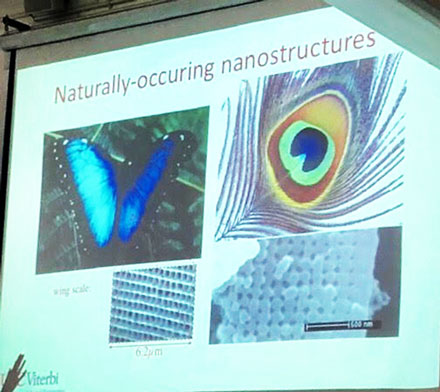 |
| Professor Povinelli shows examples of pigmentless color in nature due to nanostructures (Source: Palmia Observatory) |
So, how does this structure generate the appearance of color? Well if you remember from your study of classical electromagnetism that the reflection and refraction of light from surfaces is determined by solving the boundary conditions imposed by Maxwell equations. In the case of nanosructures, their physical size is the same relative size as the wavelength of light and in cases like this the reflective properties and transmission and absorption properties, can be greatly affected.
In this next screenshot, Professor Povinelli explains the situation. If a thin dielectric material is placed in the path of an optical beam, then depending on the properties of the material some portion of light is reflected and refracted and transmitted. By drilling holes in the dielectric or growing tiny mostly periodic structures on the material, the optical properties can be changed. Note how in this slide view when there is no nanostructure built into the material, the transmission amplitude there is only minimal effect. But with some nanostructure built into the material we can see that the transmission and absorption characteristics now take on a wavelength dependent character. By adjusting the size of the nanostructures, the material can be made to exhibit a wide range of wavelength dependent variation.
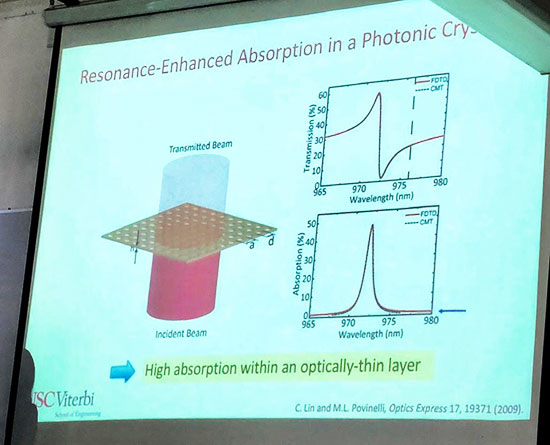 |
| Professor Povinelli explains how nanostructure on the same size of the wavelength works (Source: Palmia Observatory) |
So, not only does this theory of nanostructures explain how the examples in nature for butterfly wings, e.g., but leads to new applications in optical engineering. One particularly interesting example was the possibility of thermal rectification or of a thermal diode, which let's heat flow in only one direction, much like an electrical diode only allows current to flow in one direction.
You can see in the slide below, how the direction of heat flow can be controlled by temperature sensitive nanostructures. This is a pretty neat concept and I had not heard of it before. Povinelli explained that several groups are investigating this new technology as a way of implementing passive thermal management systems for satellites and other systems. So, this colloquium was very interesting and thank you Professor Povinelli!
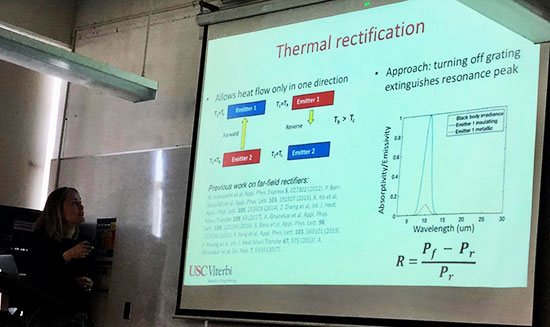 |
| Professor Povinelli explains the very interesting idea of nanostructured thermal diodes (Source: Palmia Observatory) |
There were several other seminars on possible forms of dark matter, like axions, but I couldn't really follow the arguments. I recognized since many times the presenters mentioned the importance of gauge theory when formulating alternative theories of dark matter and how proposed theories have to be structured so that they are gauge invariant. Well, I have been struggling with getting a better understanding of gauge theory for some time, so I looked up some explanatory papers and luckily came across "Demystifying Gauge Symmetry" by Jakob Schwichtenberg. Maybe this paper was finally my chance to come up to speed on understanding gauge theory. But, that paper started off by saying how working physicists were deeply divided over the importance of gauge theory. It turns out that many think that gauge theory is telling us something very fundamental about the world, while many other influential thinkers say that it is just a mathematical convenience. Well, what is the poor physicist wannabe supposed to make of this controversy? The relevant section of the paper is pasted below for your own consideration.
 | |
|
The rest of the paper looks quite informative and yet needs to be studied, but in addition I wanted to review one of the authors newest books that promises "a gentle introduction to gauge theories." This book, "Physics from Finance" uses some models and analogies from financial theory as a way to explain gauge theory.. In fact, some podcasters, Eric Weinstein, for example, claims that introducing gauge theory into economics will offer more and better explanatory power. Can it be that gauge theory is so powerful that it applies to economics as well as physics? Well, this is just what I need, so if you are interested in more on this interesting topic check out this book.
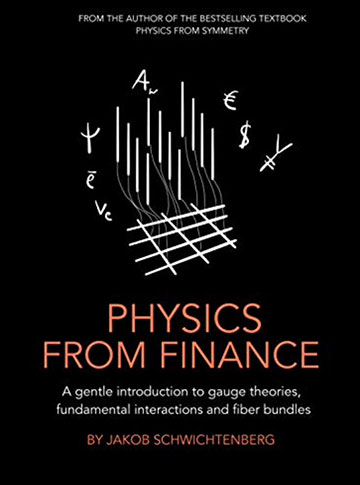 | |
|
 | |
|
Also, just to get an alternative view or perspective on gauge theory, I also found another book that seems to be a gentle introduction to gauge theory. My review of this book by K. Moriyasu is also just getting started, but he seems to present the gentle introduction in a more mathematically oriented way without the financial analogy. This primer explains gauge theory without getting bogged down in the details of the Standard Model or too much attention to mathematical rigor, so it is easier to get an understanding of what the theory is all about.
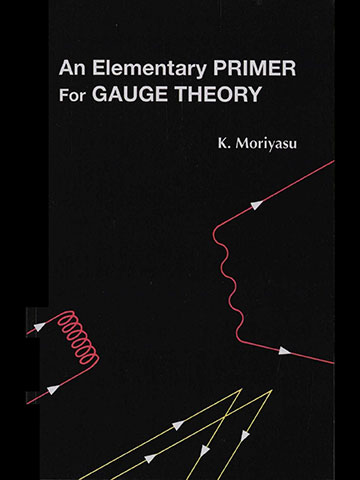 |
| Finally, a book that gently explains gauge theory (Source: K. Moriyasu, "An Elementary Primer for Gauge Theory") |
Moriyasu begins the discussion of gauge theory with the example of meter sticks that change length depending on their location. You can see in the figure below that the length of the measuring rod changes and is different length when at location x compared to location x + dx. Well, if your measuring device changes dramatically like in this example, then your measurements would differ widely between those made at x and those made at x + dx.
Hmm, I don't quite get the whole topic yet, but it does seem that by proposing new physical theories that can be made to be gauge invariant, then you are more on the right track. We have to make sure that our measuring sticks do not change, and if they do change, we need to account for that change when they are used. For instance we already know that time and space can be distorted by high velocities or gravitational fields and this distortion in our measuring devices must be taken into account. But gauge theory seems to be saying something deeper than that of special and general relativity. We will have to wait and see about this fundamental nature!
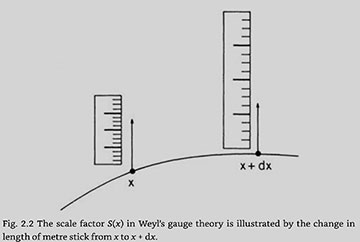 | |
|
Finally, more for fun more than anything, I discovered another author, Stephon Alexander, who writes that maybe jazz is the secret ingredient that shows the secret link between music and the structure of the universe. He does this in his latest text, "The Jazz of Physics." Well, I haven't had much of a chance to read any of this text, so I can't comment. But if you sense there is some connection between jazz or maybe at least music and physics, then check out this interesting book. Hmm, maybe the final answer will be some combination of gauge theory and jazz!
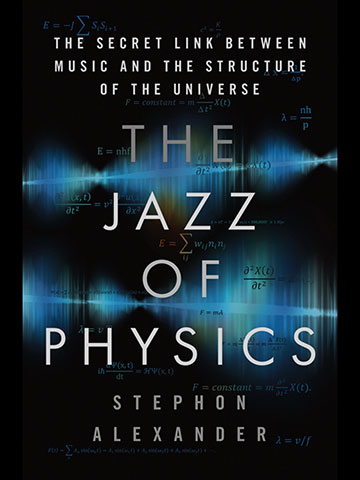 |
| Maybe jazz is the secret ingredient that ties the universe together? (Source: S. Alexander, "The Jazz of Physics") |
So, in order to be open to new experiences and see if jazz has some secret connection to physics, Resident Astronomer Peggy and I showed up at Laguna Beach Live , with Science Nerds and Theatre Impresarios, Scott and Sandy, for an evening of jazz with Peter Erskine and Jazz Trio. I don't see the connection yet, but it was enjoyable. Thank you Peter (and trio)!
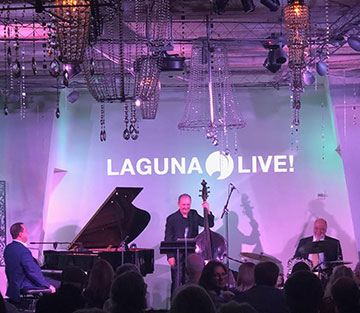 |
| Peter Erskine (on drums) and jazz Trio at Laguna Beach Live (Source: Palmia Observatory) |
So, that's it for now and its almost time to pack my bags for the 3rd International Planetary Caves Conference in San Antonio, TX, but in the meantime, hopefully, we will get a chance to see the Starlink string of pearls from this 5th Starlink mission!
Until next time,
Resident Astronomer George
Be sure to check out over 300 other blog posts on similar topics
If you are interested in things astronomical or in astrophysics and cosmology
Check out this blog at www.palmiaobservatory.com

No comments:
Post a Comment